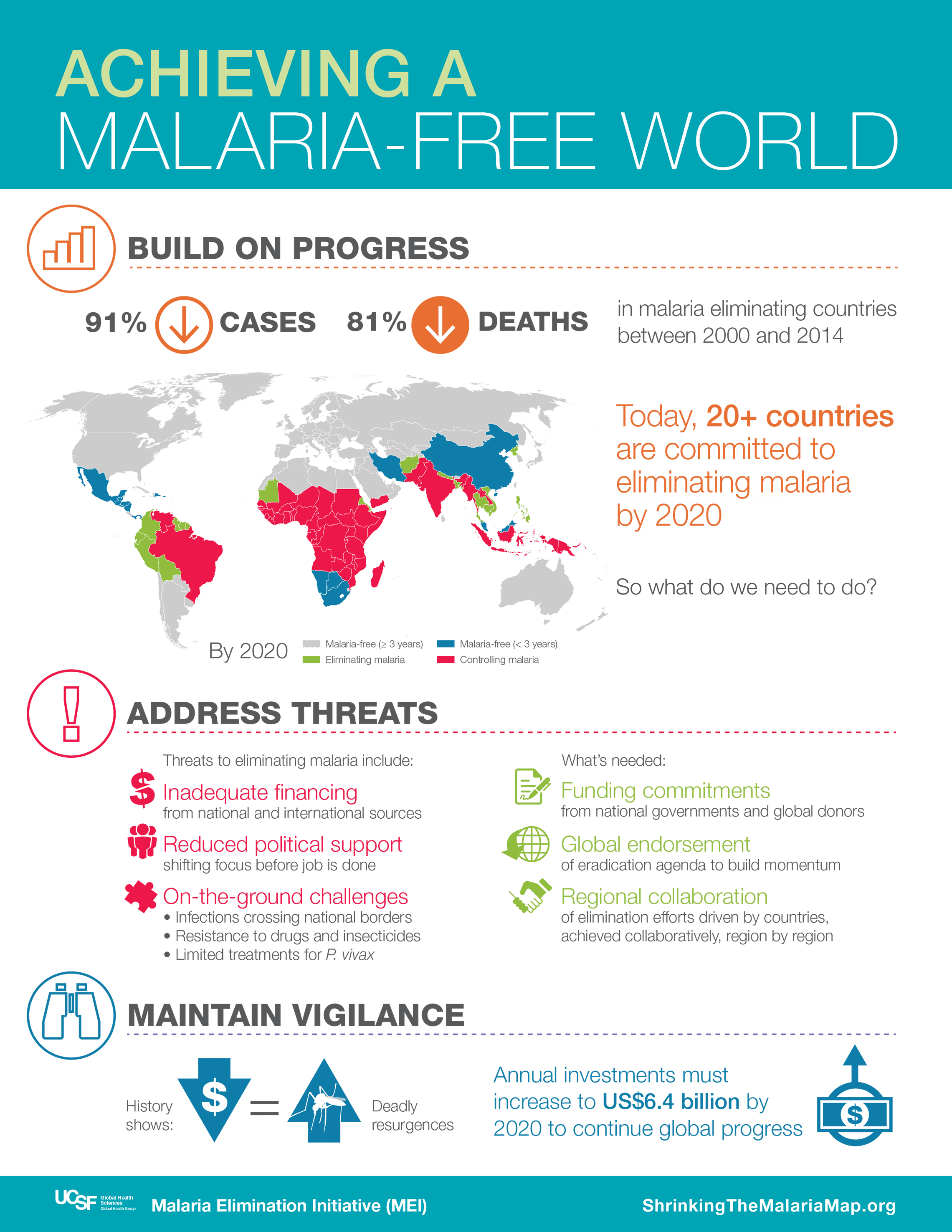April 22, 2016
In advance of World Malaria Day on Monday, April 25, the team at the University of California, San Francisco’s Malaria Elimination Initiative (MEI) published a groundbreaking study in The Lancet yesterday. With their permission, Friends has cross-posted MEI’s blog entry about the report below.
Global malaria eradication—led by countries and regions—is possible within a generation, but only with renewed focus, new tools, and sufficient financial support, according to a paper published yesterday in The Lancet by the UCSF Global Health Group’s Malaria Elimination Initiative (MEI). The paper examines the progress of 35 countries working to eliminate the disease. The paper also identifies the biggest threats—loss of financial, political support and technical challenges—and the most crucial enabling factors to achieving a malaria-free world.
More than half of the world’s countries have already eliminated malaria. According to Sir Richard Feachem, director of the UCSF Global Health Group and the paper’s senior author, “The malaria map is shrinking rapidly. More than 20 countries are on track to eliminate by 2020 and over 60 can do it by 2030. We cannot let up now. To achieve the ambitious but attainable goal of malaria eradication by 2040, the targets we set must be as big and bold as our aspirations.”

Check out these resources to learn more about this research and the shrinking malaria map:
Press Release: Malaria-Free World Possible within a Generation, Study Says
Infographics & other social media resources: The MEI’s social media kit
